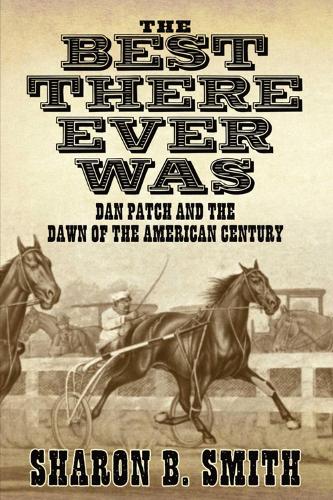
Best There Ever Was: Dan Patch and the Dawn of the American Century
(Hardback)
Publishing Details
Best There Ever Was: Dan Patch and the Dawn of the American Century
By (Author) Sharon B. Smith
Skyhorse Publishing
Skyhorse Publishing
6th September 2012
United States
Classifications
General
Non Fiction
798.460973
Physical Properties
Hardback
256
Width 152mm, Height 229mm, Spine 25mm
431g
Description
His winning percentage was well above Jordans shooting average or Woodss domination of golf tournaments. And he sold products and drew spectators like no one had ever done. He was hands-down the most famous athlete in Americas most popular spectator sport, and exactly one hundred years ago you would have been hard pressed to find anybody in the country who didnt know his name. He was Dan Patch, and he was a racehorse.
At the turn of the last century, harness racing drew larger crowds and offered bigger paychecks than any other sport. Its stars were household names, and Dan Patch was both the most celebrated and the richest. As successful as he was on the track, Dan Patch was also Americas first marketing machine: the horse who could sell cigars, washing machines, stoves, automobiles, and animal feed, just by the presence of his name and photograph. The Best There Ever Was examines the evolution of sports marketing through the lives of Dan Patch and the three men who owned him: an Indiana breeder, Dan Messner; M. E. Sturgis, who sold the horse for $20,000 (a fortune in those days) and spent the rest of his life trying to buy him back; and Marion W. Savage of Minneapolis, whose entrepreneurial skills presaged todays sports marketing geniuses.
Any athlete who can draw a 90,000-person crowd, offer up world records, and then sell a coal stove with his name on it may well be the best by anybodys standards. A fun and fascinating read for sports lovers.
Reviews
Before Man o' War, before Seabiscuit and almost three-quarters of a century before Secretariat, a pacing racehorse named Dan Patch enthralled Americans. By the time Dan Patch reached racing age in 1900, the nation was hurtling past smokestacks that rose into the 20th century. Dan Patch was a star during the twilight of an America that evokes memory and myth. The horse links us to a past of county fairs and church suppers, of neighbors waving to one another on hometown streets. He excelled at old-time harness racing while living on into the new automobile era.As Sharon B. Smith observes in "The Best There Ever Was," the timing of Dan Patch's birth date, April 29, 1896, coincided with the shift to transportation's future: Six weeks later, automobile manufacturers Charles and Frank Duryea would announce that they had sold their 13th horseless vehicle. Americans called these motorized contraptions by a variety of names: gasoline buggies, locomobiles. The newfangled machines had to share the dusty, unpaved roads with horses. But by the time Dan Patch had finished his racing career, in 1909, Henry Ford had introduced the Model T. By the time the horse died, in 1916, Ford was selling half a million cars a year. This took horses off the roads and confined the fastest of them to racetracks. In harness racing, horses trot or pace at speed while urged on by a driver in a single-seat cart called a sulky. Americans in the 19th century identified closely with this sport because most people drove horses as their primary transportation. Few could resist the urge to go fast when another horse and buggy pulled alongside. Harness racing was daily life lived large. People loved Dan Patch because he was fast and also because he started bowing to the grandstands, something he learned on his own. Newspapers called him the "national pet."Ms. Smith makes the argument that Dan Patch stood for Middle America and its cultural values, accompanying a population shift from the East to the nation'
Author Bio
Sharon Smith is an award-winning reporter/anchor of televised horse racing on ESPN, NBC and Sportschannel Los Angeles and the author of five books on horses and racing. She is a graduate of Northwestern University and attended journalism school at the University of Texas. Smith lives in Milford, Connecticut.
